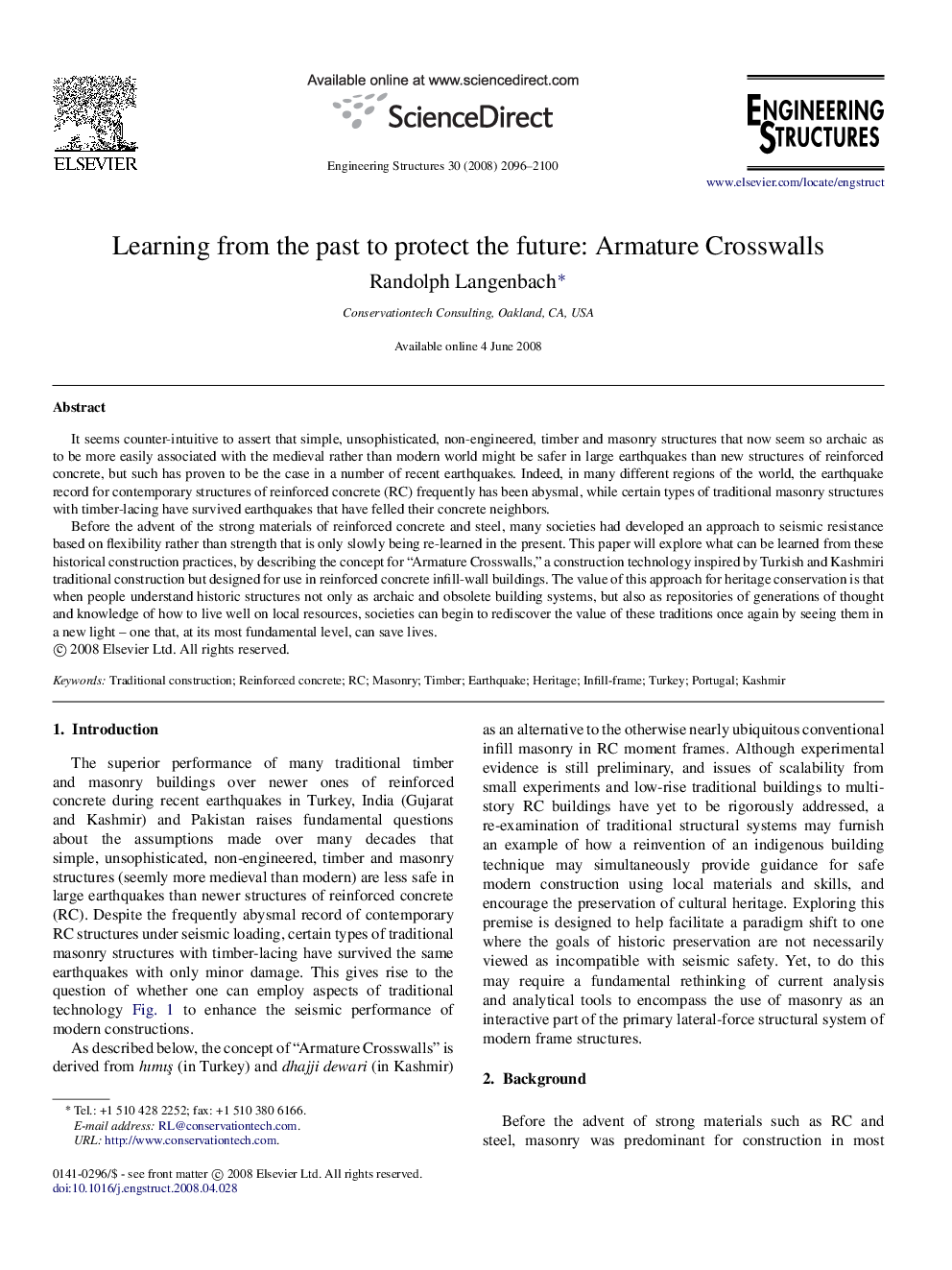| Article ID | Journal | Published Year | Pages | File Type |
|---|---|---|---|---|
| 269120 | Engineering Structures | 2008 | 5 Pages |
It seems counter-intuitive to assert that simple, unsophisticated, non-engineered, timber and masonry structures that now seem so archaic as to be more easily associated with the medieval rather than modern world might be safer in large earthquakes than new structures of reinforced concrete, but such has proven to be the case in a number of recent earthquakes. Indeed, in many different regions of the world, the earthquake record for contemporary structures of reinforced concrete (RC) frequently has been abysmal, while certain types of traditional masonry structures with timber-lacing have survived earthquakes that have felled their concrete neighbors.Before the advent of the strong materials of reinforced concrete and steel, many societies had developed an approach to seismic resistance based on flexibility rather than strength that is only slowly being re-learned in the present. This paper will explore what can be learned from these historical construction practices, by describing the concept for “Armature Crosswalls,” a construction technology inspired by Turkish and Kashmiri traditional construction but designed for use in reinforced concrete infill-wall buildings. The value of this approach for heritage conservation is that when people understand historic structures not only as archaic and obsolete building systems, but also as repositories of generations of thought and knowledge of how to live well on local resources, societies can begin to rediscover the value of these traditions once again by seeing them in a new light–one that, at its most fundamental level, can save lives.
